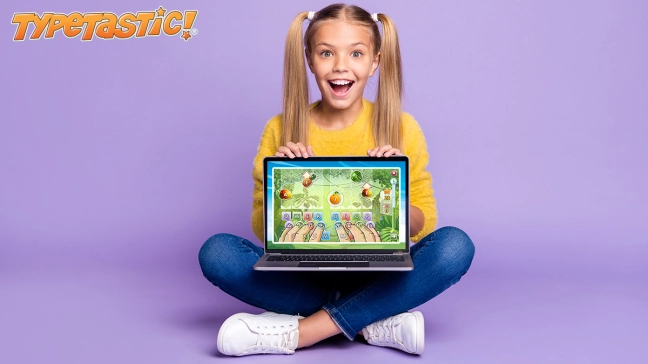Motivating Kids to Practice Keyboarding When No One’s Looking

By Jessica Butcher
As a computer science teacher for students in grades 2-4 at Cartmell Elementary School, it’s clear to me that typing is a foundational skill for a range of disciplines. In a 1:1 computing school like ours, however, it’s a foundational academic skill, as well.
In my coding lessons, I post reflection questions students need to respond to by typing. Other teachers post open-response questions for students to respond to throughout the day. Students use programs like Google Classroom, Google Slides, and Google Presentation to do their school work routinely, and all of those activities require typing.
So when our administration asked me to teach keyboarding in addition to computer science, I was eager to get started. One challenge my students and I faced, however, was the fact that they are with me for two weeks, then they rotate out and don’t come back for 16 weeks. Even if they made amazing progress in two weeks—and many do!—how could I help them to maintain or even improve on that progress during the long stretches when they aren’t in my class?
We do it by helping students set individual goals to take more ownership of their own learning.
Setting Goals
When my students first start my class, we do an introductory lesson. It covers the basics, such as posture, but I also make sure students know how to find their own daily records. I stress accuracy in their typing quite a bit, so I especially want to make sure they know how to find that.
I like them to go back and redo any sections where they didn’t have at least 70% accuracy. For the first few days I have them, I pull each student up individually to talk about where they are and where they want to be, and we practice some goal setting. Then for the last 10 to 15 minutes of all of my classes, they get TypeTastic time to work towards that goal.
We also use the Leader in Me program in our school, so we’ll talk about ideas such as beginning with the end in mind—which might be having the ability to type in college—and being proactive. They often put those ideas to work immediately! As they’re waiting to confer with me on their individual goals, they’ll go into the accuracy tab and look at their accuracy rate. They get so excited to beat me to it, telling me, “Oh, well you were going to show me this but I just went ahead and fixed it anyway.”
Motivation through Competition
I like to make sure they know how to use the whole program pretty well, too, because during the 16 weeks they don’t come to my class, they still have access to TypeTastic. They may not get dedicated time to practice on it, but they think of it as a game, so they’ll use it on their own after completing other work, or even during indoor recesses.
I don’t need to offer any other incentives to reach their goals because they enjoy using the program, but I also get them pretty pumped up about it. At the end of some of the units in TypeTastic, students get a little graph that color codes them red, yellow, or green, based on accuracy and words per minute. My students find it very motivating.
I do challenge them to compete with me, too. I’ll make them watch me take a pretest without looking at my fingers. Sometimes I’ll even talk to them while I’m typing, saying things like, “You need to get as good as me,” and it becomes kind of a running joke that they’re going to beat me. Joke or not, they’re very goal-oriented.
No one’s beaten me yet, but I have had a couple 2nd-grade students go from two words per minute to 17 words per minute, so I’ll call them winners.
Big Wins!
A big “aha” moment came recently when after one of my kids couldn’t get herself logged into her Chromebook for eight days. She was really struggling and it was hurting her confidence, even as I cheered her on and reassured her she could do it. The very last day in my class, she told me, “Ms. Butcher, I could log myself in without looking at the keys on the keyboard today.” That was a big deal for her.
She’s not alone, either! Our 2nd-graders are getting logged in much faster this year now that they’re taking keyboarding, which adds up to a lot of recovered instructional time throughout the year.
Lessons Learned
This was my first year with TypeTastic, and there are a couple things I’ll do differently next year. First, I’ll give them the pretest at the beginning of the year. I didn’t know about it when we started this year, and I wish I had. The goals we set throughout are great motivators, but they’re also focused on incremental improvement. To be able to show them the progress they made by taking the same test at the beginning of the year and the end would be huge!
I’m also going to push for other teachers to use TypeTastic more. Perhaps they could use it during a center or guided reading instruction, or at least offer it as an option somewhere. I can see when students have logged into the program last, and when they come back to me some students are using it for the first time since they were in my class last. If their other teachers had them use it even a few times, they’d maintain so much more progress.


